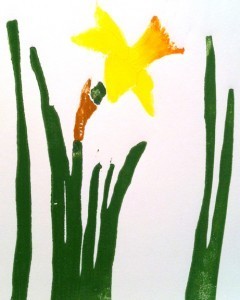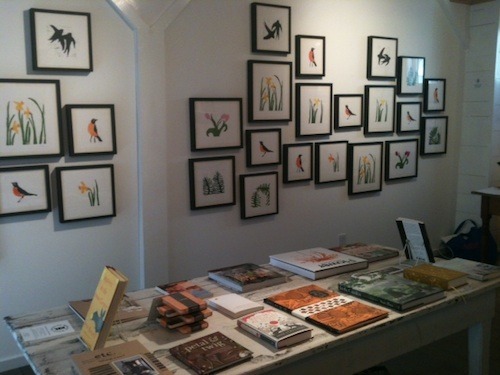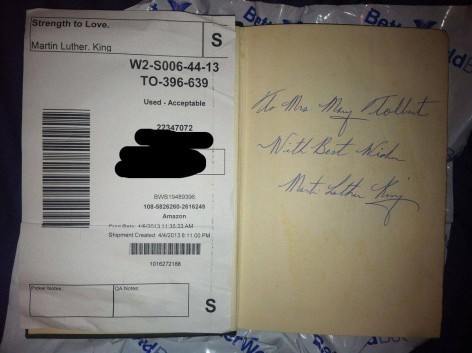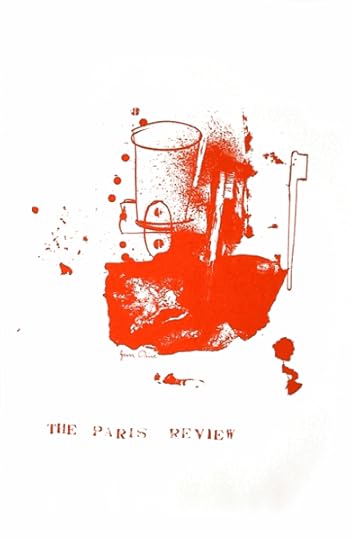The Paris Review's Blog, page 827
April 24, 2013
Lello Bookstore, Porto, Portugal
The Lello bookstore, Porto, Portugal.
“Standing there, staring at the long shelves crammed with books, I felt myself relax and was suddenly at peace.” —Helene Hanff, Q’s Legacy
Remote Viewing in the Sooner State
Assuming my issue of EYE SPY, a British glossy devoted to “The Covert World of Espionage,” can be trusted, between 1973 and 1995 the United States government (and its Chinese and Soviet rivals) spent millions hiring teams of personnel to scry photographs of enemy installations and describe their heretofore unknowable innards. A final report on the Stargate Project, a remote viewing project conducted during these years (preceded by Sunstreak, Dragon Absorb, Centerline, Grill Flame and Gondola Wish), acknowledged a “statistically observable effect,” albeit one producing information too “vague and ambiguous … to yield actionable intelligence.”
A contemporary remote viewing conducted by Jeff Martin, fiction editor of This Land Press and (with C. Max Magee) The Late American Novel: Writers on the Future of Books, yielded far better results. Imaginary Oklahoma is an anthology of forty-six writers’ attempts to envision Oklahoma without ever having visited America’s forty-sixth state. Martin, in his introduction to the book, describes his inspiration for the project. He gives nods to Lydia Davis’s collection of super-short stories, with their ability to create “worlds in mere sentences” and “beautiful questions” from “simple narrative,” and Ed Ruscha’s 1990 painting No Man’s Land, which Martin describes as “The ghostly outline of the pan-shaped land. The shadowy question mark stretched across the canvas, almost menacing.” It was an excellent pairing of prompts. Imaginary Oklahoma manages to raise the stakes of the short-prose form. Read More »
Buy Tiffany’s, and Other News
Should you have $50,000 lying around, you have two days to bid on this manuscript of Breakfast at Tiffany’s.
A new book argues that Jane Austen “isn’t merely fodder for game-theoretical analysis, but an unacknowledged founder of the discipline itself: a kind of Empire-waisted version of the mathematician and cold war thinker John von Neumann, ruthlessly breaking down the stratagems of 18th-century social warfare.” But … didn’t she come first? Doesn’t that make him a trousered version of her? Discuss.
Andy Griffith and Robert Burns: a surprisingly convincing case for their spiritual kinship.
An appreciation of The Lonely Doll and its complex legacy.
April 23, 2013
A Dinner in Moscow
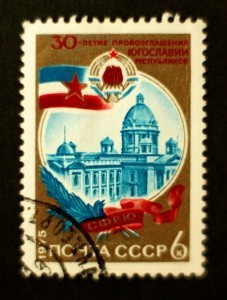 In March 1975, a couple of weeks after my twenty-fifth birthday, I accompanied my girlfriend Tina on a trip to Russia. At the time Tina was a graduate student at the University of Essex pursuing a thesis on “Dostoyevsky and the Russian Orthodox Church,” under the benign supervision of the eminent scholar and translator Angela Livingstone. Londoners both, we had been living together for almost four years in the village of Wivenhoe near its estuary, close to the college campus, far from the big city and the disapproving glare of our respective widowed mothers.
In March 1975, a couple of weeks after my twenty-fifth birthday, I accompanied my girlfriend Tina on a trip to Russia. At the time Tina was a graduate student at the University of Essex pursuing a thesis on “Dostoyevsky and the Russian Orthodox Church,” under the benign supervision of the eminent scholar and translator Angela Livingstone. Londoners both, we had been living together for almost four years in the village of Wivenhoe near its estuary, close to the college campus, far from the big city and the disapproving glare of our respective widowed mothers.
My mother, a conscientious objector to interfaith relationships, had long ago banned Tina from visits to her home. “It’s bad enough you have to go out with someone who isn’t Jewish,” she said, “but why did you have to pick a girl with Christ in her name?”
“Her name’s Tina,” I had replied.
“And what do you think that’s short for, idiot?”
For her own part, Tina’s mother, dressed always in Greek Orthodox widow’s black, was opposed to our living together on moral grounds, which had, I could see, a superior logic.
Our workman’s cottage in Wivenhoe featured no bathroom, a decidedly unpoetic outside toilet, and walls so thin that the neighbors’ voices came through no softer than our own. The wife could be harsh. “Pick, pick pick,” we heard her yell at her husband as we sat down to eat. “You stick your finger so far up your nose that you’re gonna pick your bloody guts out one of these days.” Our kitchen table doubled as a work desk, and was covered with books by obscure (to me) Russian saints and philosophers, Tikhon of Zadonsk and Vladimir Solovyov among them.
Angela Livingstone was already in Russia working on a translation project, and she invited Tina to come and visit her. I tagged along for the ride. We booked onto a group tour through Intourist, the Russian travel agency: it was not easy in those days to move without an official guide in the Soviet Union. We planned a few days in Leningrad, to be followed by a train journey to Moscow, where Angela would meet us at our hotel and, we hoped, spirit us away from our minders. Read More »
Notes from a Bookshop: April, or Spring Fever
Just before dawn all is blue: I barely see the lark bunting light on a fence post. I stop to admire its white, plump breast, and for a moment the two of us are alone in this world, and at peace.
The bunting flies away: white on black on white on black.
—“Weather Report: April 14,” from Dakota, by Kathleen Norris
After working the day at the bookshop a few weeks ago, I pulled into the long driveway of our old 1860s farmhouse about thirty miles outside town. The light had started to go that dusky blue-gray, turning the hills around us the ruddy red of new buds. I stepped out of my car and a wave of noise came at me from the swamp just beyond a stand of trees in front of our house. This time of year, the northern green frogs are so insistent, so loud, like the twang of thousands of rubberbands snapping, snapping, snapping, and the bullfrogs and peepers complete the chorus. It is eerie, and it is wonderful, and up here in northeast Pennsylvania it is our signal that spring has begun.
Our little collective of shops at Maude Alley also burst into spring this month in its own way. Named for one of the owner’s grandmothers, the alley reminds me of the kind of meandering wooden walkways you find at the beach, but instead of winding toward the ocean ours ends in a sweet secret garden along with a cheese shop, a gallery, and us. On either side of the alley is Milkweed, our anchor store, whose fanciful window displays alone are worth the trip. Hoping to catapult us far from the long winter, the Maude Alley shops decided to throw a party.
When Mark and I lived in the city, we threw crazy cocktail parties in his painting studio down on Great Jones Street. We’d buy cases of pinot noir and chardonnay from Astor Wines up the block and drag bulging bags full of Camembert, manchego, and pecorino from Murray’s Cheese Shop on Bleecker. Filmmakers and hairdressers and painters smoked on the fire escape, uptown collectors mixed with writers from Brooklyn, burlesque dancers bartended and choreographers gulped whisky with bankers, and usually at some point in the party I would lock eyes with Mark across the room and worry the crush of people was about to get out of hand, though it never did. Read More »
Happy Birthday, J. P. Donleavy
Bargain Books, and Other News
It’s World Book Night.
When you buy a book for $3.50 and it’s signed by Martin Luther King.
The Digital Public Library of America is live!
The craft behind Toronto’s Type Books storefront.
RIP Mud Luscious Press.
April 22, 2013
Outside the Paris Pavilion
On this day in 1964, the New York World’s Fair kicked off in Flushing Meadows, Queens. And we were there! Below, the brochure for the fair’s smallest pavilion.
Mysterious Skin: The Realia of William Gaddis
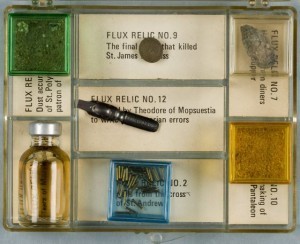 Most people with scholarly inclinations will visit a novelist’s literary archive to follow the paper trails, as manifested through gathered correspondence, stray postcards, marked-upon stationery, and scattered drafts. A couple of months before the recent publication of his collected letters, I visited the William Gaddis Papers at Washington University in Saint Louis in search of something near the polar opposite.
Most people with scholarly inclinations will visit a novelist’s literary archive to follow the paper trails, as manifested through gathered correspondence, stray postcards, marked-upon stationery, and scattered drafts. A couple of months before the recent publication of his collected letters, I visited the William Gaddis Papers at Washington University in Saint Louis in search of something near the polar opposite.
I had harbored a minor obsession with the novelist for years, even before reading a single word of his writing, probably due his reputation as a writer who crafted a string of unapologetically dense works while almost entirely avoiding the fickleness of the literary limelight. I had bought a used hardcover of Carpenter’s Gothic, one of Gaddis’s shorter novels, at a library booksale just after my early-twenties Pynchon obsession had tapered off a bit. That book sat unread on a shelf for a few years until I decided to make the plunge into Gaddis’s work after seeing his specter, both his name and the titles of his books, floating through David Markson’s great anecdote—and allusion-heavy novels.
More dilettante than scholar, I was on the hunt for certain pieces of the novelist’s realia, that archival category of physical, three-dimensional objects rather than the usual rectangular flatland of manuscripts. Gaddis—who wrote “only” five books over the course of a forty-odd-year career (though amounting to around 2,640 pages in total), with each tome encompassing every possible spectrum of American vernacular and obsession; who won a MacArthur Award and two National Book Awards; and who was famous, as Cynthia Ozick once put it, for not being famous enough—had one object in his collection that I had never seen in a library catalog before. I found this particular entry buried deep within the online finding aid for the Gaddis Papers:
“Box 166.2/- : Zebra Skin, (1 item), Stored in oversize; box on order.”
After scanning across this listing while doing cursory research for something else, I instantly became obsessed with the idea of the zebra skin in the library. What, exactly, did it look like? How was it stored among Gaddis’s papers? Why had he owned it? What was it doing in the special collections of an academic library? Read More »
Jim Dine, Untitled, 1975
Since 1964 The Paris Review has commissioned a series of prints and posters by major contemporary artists. Contributing artists have included Andy Warhol, Robert Rauschenberg, Helen Frankenthaler, Louise Bourgeois, Ed Ruscha, and William Bailey. Each print is published in an edition of sixty to two hundred, most of them signed and numbered by the artist. All have been made especially and exclusively for The Paris Review. Many are still available for purchase. Proceeds go to The Paris Review Foundation, established in 2000 to support The Paris Review.
The Paris Review's Blog
- The Paris Review's profile
- 305 followers





